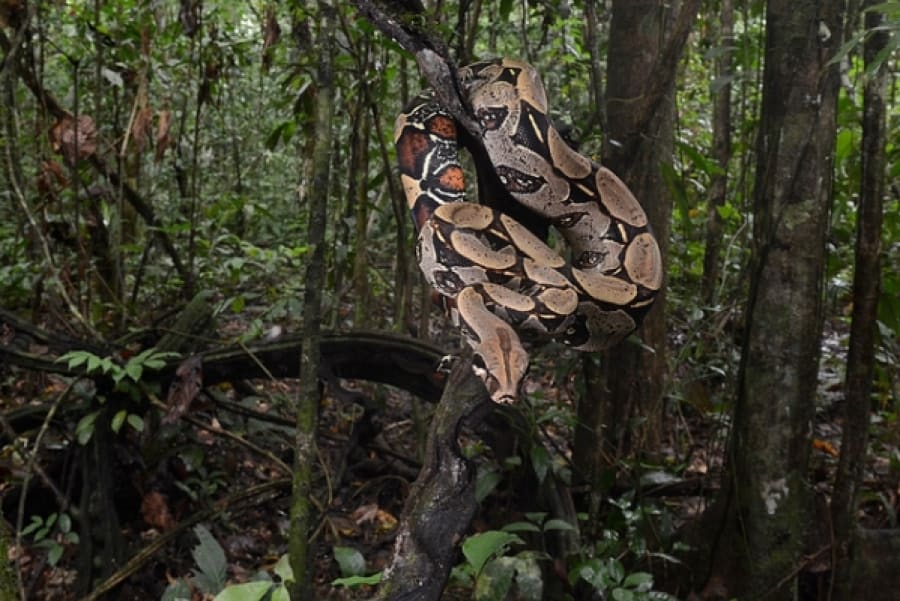

Threatening their existence in the wild, boas are hunted for their skins to make various products. Constrictors are dwarfed by their anaconda cousins and grow to around 4 meters in length. Although proficient swimmers, they prefer a more land-based lifestyle and seek safety in mammal constructed burrows. Their coloration depends on habitat and there are many different subspecies. Boa Constrictorīoa constrictors are a very distinct snake. Juveniles of this species are reddish orange then mature to a magnificent green. They have white markings over their body and are locally common in the Amazon Rainforest. They often use their strength to hang from branches and snatch prey like mammals and birds. Emerald Tree Boa Photo by Pavan on FlickrĮmerald tree boas live in the trees and blend into the leafy background. They feed on birds, lizards, and small mammals found in their range of northern and central South America. They have iridescent scales giving this boa its common name. Rainbow boas are very popular in the pet trade due to their beautiful coloration. Strangely for a neotropical pit viper, bushmasters lays eggs as opposed to giving birth to live young. They are closely linked to ‘virgin’ or ‘pristine’ tropical wet forests and you may hear Amazon guides telling stories about encounters with this snake. Bushmaster Photo by Doug Greenberg on FlickrĪs mentioned in the article on rainforest snakes, bushmasters are a formidable South American viper and are the largest venomous snake in the western hemisphere. Bromeliads are often home to different frogs as the plants collect water. Smart for a snake, there are records of this species investigating bromeliads for their frog prey. A favourite species is Chironius bicarinatus, which actively seeks out prey in shrubs and trees. They include both ground-living and canopy-living diurnal species that mainly prey on frogs but also take lizards and birds. Snakes in this genus (Chironius) are among the most abundant in all South American forests. They hunt mainly at night eating most manageable animals like capybara and deer. They seem to choose areas with thick vegetation where they hide in the foliage. They grow to about 10 metres and lead a semi-aquatic lifestyle made possible by the position of their eyes and nostrils on the tops of their head. AnacondaĪnacondas (photo above) are the world’s heaviest snake at around 250 kg. In this article I will talk about some of the encountered Amazon rainforest snakes you may find on your adventure. When you spot whip snakes hiding amongst the lush green foliage, it’s as if every part of the Amazon Rainforest is alive.

If you are canoeing in the forest and catch sight of a giant anaconda coiled in the shallows, you cannot help but feel excited. Amazon rainforest snakes are fascinating animals to encounter in the jungle.


 0 kommentar(er)
0 kommentar(er)
